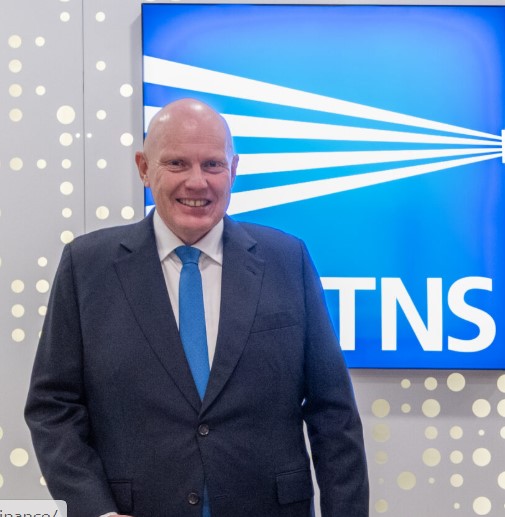Revolutionizing Fuel and Convenience: Four Trends Shaping Retail on the Forecourt

By John Tait, TNS’ Global Managing Director for its Payments Market business.
Fuel and convenience retail is undergoing a significant transformation. Traditional fuel stops are evolving into digitally enabled, customer-centric retail destinations, driven by rising consumer expectations and advancements in connected technology. Convenience stores are also becoming increasingly digital, embracing self-service kiosks and other services that extend their capabilities without adding cost or friction for customers.
These forecourts now serve as retail hubs, offering lifestyle services, real-time loyalty engagement and seamless payments. Simultaneously, they are becoming rich sources of data, enabling operators to enhance operations, anticipate customer needs, and improve overall experiences.
To succeed, forecourt operators must invest in secure, scalable infrastructure. Without reliable, low-latency connectivity and secure systems, innovations in retail experience, payments, and data management, may risk failing at the point of delivery.
Trend 1: Forecourts as Retail Destinations
Modern forecourts are redefining the customer journey, focusing less on fuel and more on convenience, food service and lifestyle offerings. In markets such as Ireland, for example, forecourts are transforming into food-led destinations in a trend dubbed “dashboard dining”, as operators invest in fast, fresh food and premium coffee experiences.
Such innovation depends on a digital backbone that can support self-service kiosks, digital menu boards, real-time inventory, guest Wi-Fi and mobile ordering – all without lag or downtime. Secure connectivity is essential to helping ensure these systems run smoothly, enabling operators to meet customers’ expectations for speed and quality every time.
Trend 2: Loyalty Gets Personal
Static, point-based loyalty programs are giving way to personalized, dynamic engagement strategies. Consumers now expect relevant, real-time offers that reflect their behavior and preferences – whether that’s an app notification while fueling or a tailored in-store discount based on past purchases.
A recent Mastercard report highlights that for over 70% of retailers, purchase discounts were the top tool for retailing customers, and loyalty program points followed closely behind at 63%. Forecourts are tapping into this by integrating customer data across digital channels – app, pump and point-of-sale – to offer instant, contextual rewards.
Connected signage and pump screens also play a growing role. Targeted messages – such as fuel-linked coffee discounts – may be triggered by customer profiles or purchase behavior. This requires data that is moved securely and instantly across networks, enabling seamless engagement.
Trend 3: Frictionless Payments Without Compromising Security
Payments have become a make-or-break component of the forecourt experience. Whether customers are using mobile wallets, contactless cards, in-app payments or subscription fueling services, they expect speed and ease without sacrificing security.
In the UK, 85% of adults make at least one contactless payment per month, In Australia 94% of in-person card payments are contactless and a third were made with mobile devices and more than half of all Americans use contactless payments according to a poll by Mastercard.
This trend is accelerating globally as consumers demand convenience across every touchpoint, though that acceleration is far from universal.
But with growing complexity comes increased risk. A fragmented payment environment can lead to inconsistent service and vulnerabilities. A unified secure and compliant infrastructure that supports multiple payment types while meeting PCI DSS and EMV requirements, not only protects the transaction but also strengthens trust in the brand – critical in a high-frequency environment such as fuel retail.
Trend 4: Data and Connectivity Drive Smarter Retail Decisions
Forecourts today are data-rich environments. Every transaction, promotion, inventory movement and customer interaction generate information that can be used to optimize operations and enhance service. A report by McKinsey Global Institute estimates that “a retailer using big data to the full[est] has the potential to increase its operating margin by more than 60 percent”.
This level of responsiveness depends on robust connectivity. Every device – from fuel dispensers to in-store tablets – must be reliably linked to central systems and cloud platforms. A strong digital backbone that ensures sites remain connected, secure and ready to scale, enables retailers to innovate without disruption.
Conclusion: From Fuel Stops to Fully Connected Retail Ecosystems
The future of fuel retail extends beyond the pump. As customer expectations evolve and digital capabilities expand, the most successful operators will be those who reimagine their forecourts as fully integrated retail hubs, offering fast service, personalized engagement and seamless technology across every touchpoint.
Achieving this vision requires a strong digital foundation. From enabling frictionless payments to powering real-time loyalty and data-driven decisions, infrastructure is paramount.
With secure, scalable connectivity solutions, retailers are empowered to embrace transformation confidently. Whether upgrading legacy systems or launching next-generation forecourts, our technology helps to ensure operators stay connected, compliant, and competitive, ready for whatever the future brings.
To learn more, visit: tnsi.com/payments







